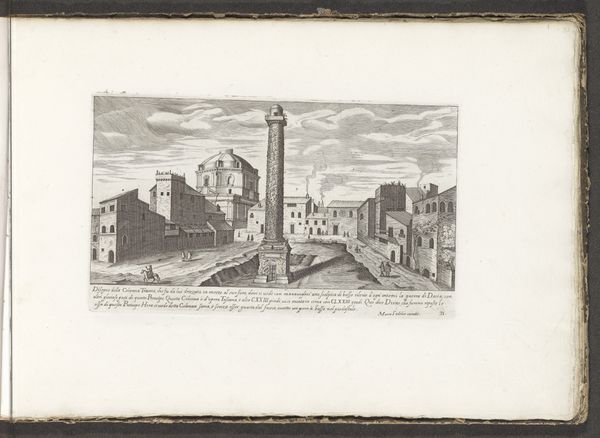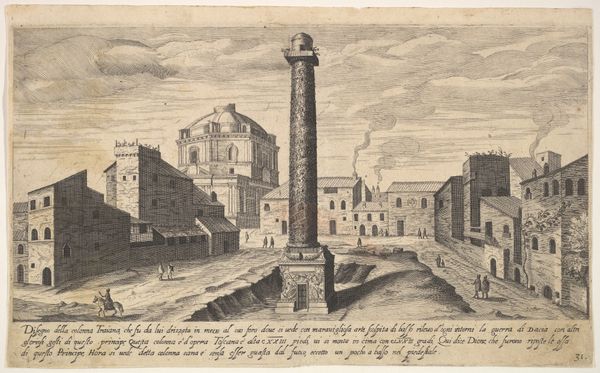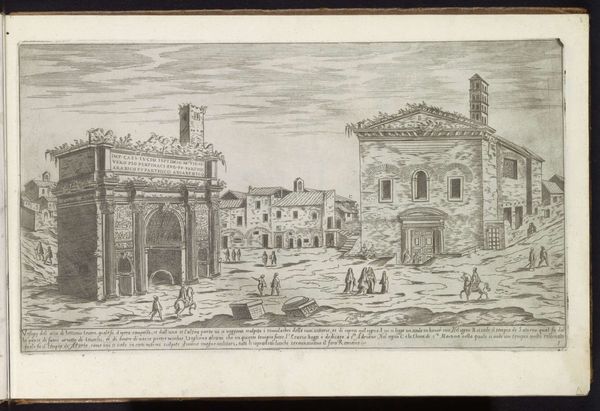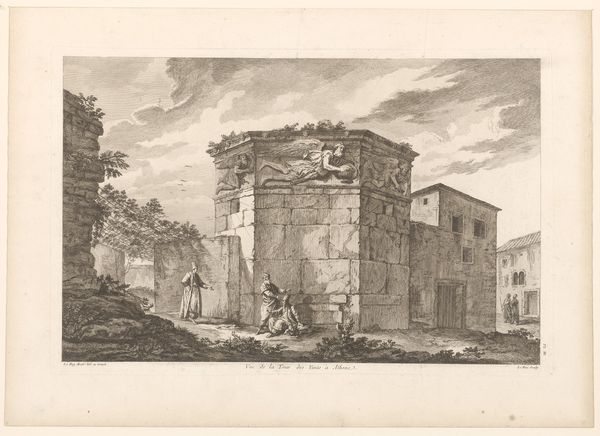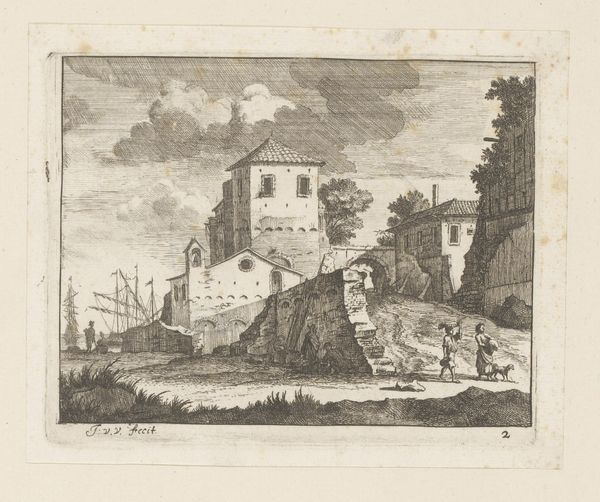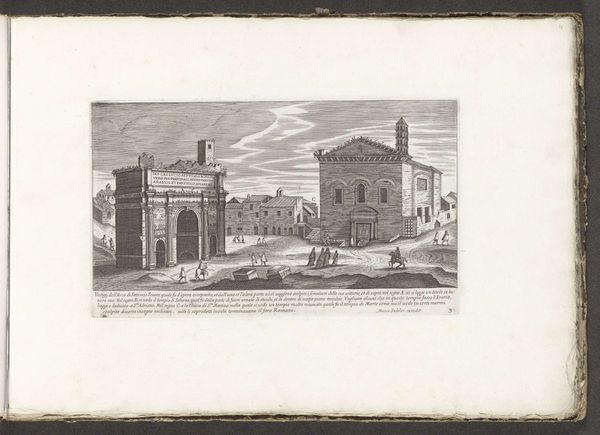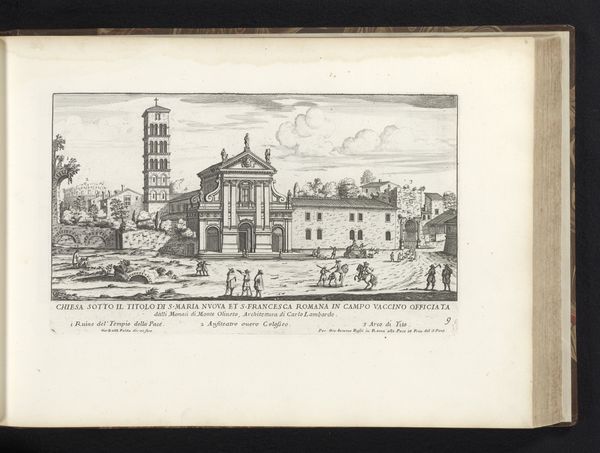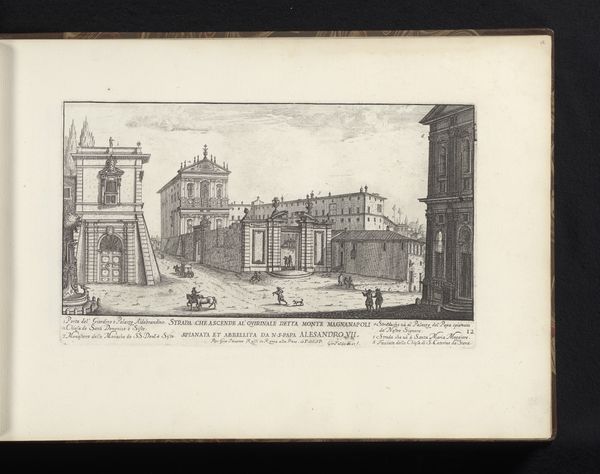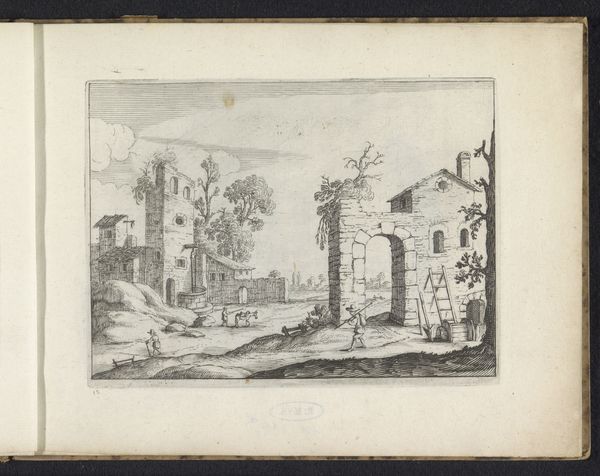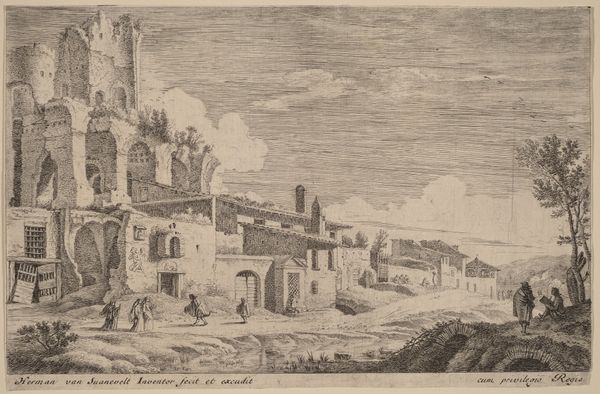
drawing, print, paper, ink, engraving, architecture
#
drawing
# print
#
landscape
#
mannerism
#
paper
#
ink
#
cityscape
#
academic-art
#
italian-renaissance
#
engraving
#
architecture
Dimensions: height 215 mm, width 381 mm
Copyright: Rijks Museum: Open Domain
Curator: This print from 1575 by Étienne Dupérac offers a detailed look at the Forum of Trajan, complete with Trajan’s Column, in Rome. The piece, rendered in ink on paper using engraving techniques, gives us a view of the cityscape during that period. Editor: My immediate reaction is one of almost severe linearity. The rigid architecture and carefully etched lines create a formal, even austere atmosphere, don't you think? The visual organization is compelling; it really captures a strong sense of space and depth, doesn't it? Curator: Indeed, and it’s crucial to situate this severity within its historical context. This wasn’t just an architectural rendering; it was also a political statement about power and legacy. Dupérac was very deliberate with his presentation of Roman power in light of the socio-political tensions within Italy during this period. He uses the column as a firm and ever-present statement, almost as a critique on then-present instabilities. Editor: Absolutely, and we can't ignore the structural language itself. Look at the dominance of vertical lines leading up to that central column—they draw your eye upwards in this incredible motion and focus your attention onto it. It serves as the structural linchpin, establishing a sense of order and classical harmony amidst the architectural complexities, while establishing a sense of height, like power extending to the heavens. Curator: And the inclusion of everyday figures amidst these architectural giants makes this even more impactful. Think about the ways Dupérac contrasts human scale with imperial ambition, causing reflection on the relationships between public and private life. In light of this power balance, you may consider whether one of these ideas truly supports the other. Editor: I find that contrast compelling on a purely visual level, too! Note the intricate textures achieved with ink, juxtaposed with the relative emptiness of the sky. That formal balance is what really speaks to me. I can admire the content while admiring the style. Curator: It shows us the enduring dialogue between artistic form and the realities it represents and reflects, as relevant now as ever. Editor: Precisely. Examining this print has highlighted for me the remarkable ability of simple lines to convey layers of formal and contextual meaning, while sparking thought for the audience.
Comments
No comments
Be the first to comment and join the conversation on the ultimate creative platform.
